#LanieMae’s theories
Text
The sexualisation of Mikoto, stalking, and how the fandom is repeating this.
CW: Stalking, sexual harassment, fanservice, murder
I’ve been thinking a lot about Double’s thumbnail, and especially the stalking theory. And if you think about it a lot basically everything fits up and that his victim was likely his stalker. Although a lot about what happened I never really have seen discussion on the why or how it’s been happening, so I just want to give my thoughts and theories on this all before Double.
The fanservice in MeMe:
The fanservice in MeMe has always felt really off to me. Milgram never has any fanservice-y stuff, minus Yuno in Tear Drop, but it’s only just her revealing outfit and nothing to do with strange camera angles or whatnot, and it’s very important to her character. For me and what I’ve think the consensus in the fandom has been, is it’s nothing more than that. That the fanservice is only there to appeal to thirsty fans or whatever. But I’ve been thinking a lot, and with the music videos extracted from prisoners minds, everything has a meaning in one way or the other. So for the creators to just throw a bunch of fanservice scenes in MeMe with no meaning apart from just plain fanservice feels really counter intuitive to the whole point of the MVs. And especially how this has never happened before makes it really strange to me. And with this idea in mind and going back to the stalking theory I mentioned earlier, I think it’s disgustingly clear what has happened to Mikoto.
Mikoto being watched:
I think what’s going on is that Mikoto was stalked for sexual reasons. The constant scenes of him in embarrassing moments (taking of his shirt, having a shower, having a bath) is what the stalker has been seeing and this subconsciously put itself into MeMe from Mikoto’s POV. Camera imagery in MeMe is very prevalent, from at the beginning him grabbing the camera and at the end him picking it up and punching it. I think this is supposed to represent him realising he’s being stalked and trying to hunt down who’s been doing it, and the destruction of the camera at the end to represent him killing the person.


Also around the middle of the song, we see security cam footage of him entering his apartment and crying on his couch, with Mikoto hyperventilating and gasping in the background. I feel like with everything I’ve said before this scene makes it extremely clear, that someone put up a bunch of camera around his house to catch him in those moments, if we’re taking that scene literally.
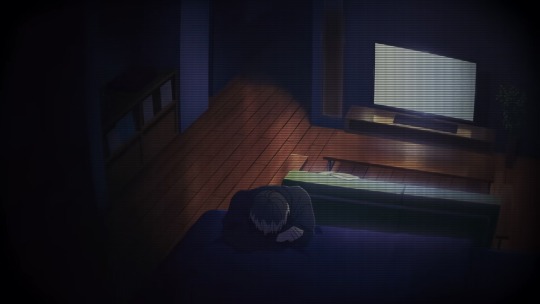
Then it cuts to him laughing at the screen in darkness, and the aforementioned fanservice scene right after this sequence of events really makes things scary to what was happening in his house. And also like I said before about the hyperventilating during this scene. I could mean multiple things such as him having a panic attack, being actually attacked or worse.
And the imagery of being watched doesn’t stop at just the camera stuff. At the beginning of MeMe in the scene at the train station, the camera moves around from behind a wall to reveal Mikoto sitting there holding a bat, like someone is watching him directly. To further back this up there’s a vignette around the edge of the camera and wee see it blink, like from a POV shot. And after the blink Mikoto disappears, and then we see him outside swinging a bat at the POV (just want to note this is outside and is probably in a different place than the train station, but I don’t know what to make of that right now, and how also the vignette I pointed out before isn’t present here). Then it cuts back to the scene in the train station, now with Mikoto holding a bat and walking towards someone on the ground, attacking them. Noticeably the vignette is still here in this scene, so the person Mikoto was attacking likely wasn’t his stalker, perhaps he just thought they were.


Wait I suddenly just got a theory from this. I just mentioned how the vignette in the scene I just mentioned likely means that Mikoto attacked someone else and the stalker was watching on. Me and basically everyone else has assumed that guy was his victim, but then what about the stalker? I’ve always strongly believed that Mikoto only killed one person but now I’m just starting to doubt that. If MeMe is to be taken in chronological order in this part, he probably killed that guy then realised that he was continuing being stalked. And as I said at the beginning of my analysis I mentioned that Mikoto punching the camera at the end could be representative of him killing the stalker and ending it (also to mention he gets the death card right before hand). And I didn’t think of it when I wrote that but what if he did actually kill multiple people in an attempt to kill his stalker. Hmm.
And going back to what I was talking about before, he probably entered his apartment afterwards and switched to Bluekoto after it was assumed everything was safe now. (Just saying I’m using Mikoto interchangeably to refer to all of the alters as it’s not clear who’s doing what, but this takes the theory of that blue was the murderer and not the other/s into account, because there’s a part of me that feels it wasn’t him attacking those people as red/green has a strong desire to protect blue and hide him from the traumatic events taking place).
I feel like I’ve gone way off track with what I’ve been saying here because while writing this I just keep noticing more and more stuff to write down and I just thought of someone thing again.
Every time it appears that Mikoto killed someone (the train scene, the garbage scene although the bag doesn’t look like a human body just saying), it cuts to a fanservice-y scene right after, maybe implying that the person he killed wasn’t the stalker, and he’s still being watched afterwards. Although this makes the bath scene kinda out of place as it doesn’t take place after a murder I think, and someone mentioned it was before the shower scene which kinda debunks this but I just wanted to mention this because why not.
Mikoto’s mindscape in MeMe:
Another thing I’ve been thinking about a lot is every character’s “mindscapes” as I call them. Yuno has an empty pink void with a tower, Fuuta has a fantasy land, Mahiru has a room inside a birdcage ect. And all of these places represent an aspect of their characters. Yuno’s representing her feelings of emptiness, Fuuta feeling that everything he’s doing is for justice and that he’s a cool hero, Mahiru being trapped and sheltered in an ideal concept of love and stuff like that. I’m going to make a theory on this in the future as it’s very interesting to me but Mikoto’s mindscape is always something that’s confused me.


Mikoto’s mindscape is a parallel of his apartment. Down to the couches, tables and everything, but lacking the bookcase and tv being buried in the water for whatever reason.
(Also I just noticed but there’s a blue thing behind the couch that Mikoto laid his head down on before which could be a bed or whatever. But in the mindscape and this other shot we don’t see it???)

(Actually maybe we do if we squint, oh well)
Okay, okay back to what I was actually going to say. The furniture from the apartment appearing in the mindscape makes sense, but what about everything else? The broken, tiled walls, the mirror, how everything is covered in a thin layer of water, the clear blue sky. There’s a bunch of this stuff I could analyse in my future post about mindscapes but I’ll just say the stuff that relates to what I was talking about earlier. But to say it right now, I think all that other stuff is supposed to be the bathroom we see him in.
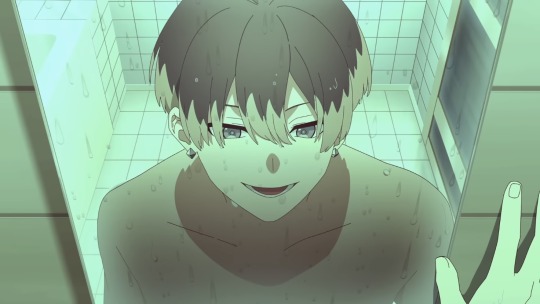
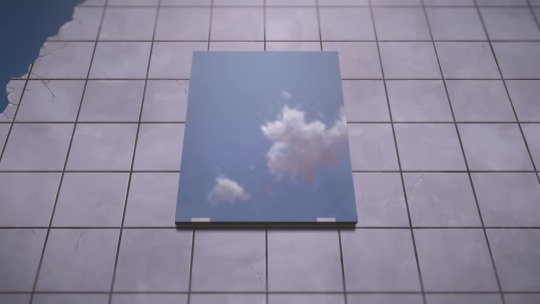
Notice here the tiles are exactly the same, and we even see the same mirror he looks at himself in, in real life then Mikoto in the mindscape.

Also to point out how the Mikoto we see looking into the mirror here is wearing a sleeve and likely in the mindscape and as someone mentioned, since the ahoge is backwards it’s likely a reflection. Although it’s strange that it has the same green filter both ways.
After this we see bluekoto (presumably) fall backwards into the water. And another strange thing I noticed is that this mirror is behind the couch, but when he falls down the couch is tipped over.

Don’t know what it make of this but again I’m just constantly pointing stuff out I notice as writing this.
So basically I think the mindscape is a mix of the living room and the bathroom. The furniture from the living room and the water, mirror and tiles from the bathroom. But this makes things confusing, why the bathroom? Why would Mikoto project imagery of his bathroom into his own mindscape? This brings me to what I was saying before. The walls in the mindscape are completely collapsed, providing no closure or privacy to this “room”. The sky is also out, so his mindscape feels very exposed. And what I said earlier about my staking theory. It’s likely that someone placed cameras up in/around his bathroom to record him naked, a complete breach of privacy and that’s why this mindscape is so exposed and has elements from there. Even in this world that he created, he still doesn’t feel safe at all.
The audience and the repeating of Mikoto’s trauma:
Basically to sum it up from what I’ve said. Mikoto was being stalked and sexualised by someone. Cameras were placed up around his house to record him in embarrassing situations and he figured out, and attempted to kill the stalker.
But here’s one thing, that story we likely see in MeMe is happening again. But with the audience.
When MeMe came out everyone went ballistic. Lots of people were very surprised in how violent it was, how compared to the calm preview we saw it instantly started off with death metal and destroyed every idea we had about him, and kept switching between being calm and violent. But what I want to walk about right now is the reaction to the fanservice.
As we all know, when MeMe released a horde of thirsty tiktokers came over and started absolutely obsessing over Mikoto and all the fanservice scenes we see. Things got so out of control that people tried to vote him innocent just because he was hot and even jackalope bought this up. But thinking about this, it’s getting dangerously close to what I think happened in his story. Being filmed in embarrassing moments without consent, and having people obsess and sexualise you for that. The music videos are representative of the prisoner’s minds, and in no way would have Mikoto known how he was shown naked and shirtless for a huge chunk of MeMe. Same as him being stalked and recorded in his story if I’m right.
The fandom here is doing exactly what his perpetrator did to him down to a T. It’s almost like what happened with Amane when people tried to reverse her brainwashing by showing her tough love by not forgiving her, exactly like what the cult did to her to try and make her obey them more. This thing is happening to Mikoto as well as Amane and repeating their traumas. And also to mention how Mikoto has DID which is a result of repeated childhood abuse so it’s likely this has been happening to him alot and just can’t escape from this reality. And for the alters to take in all the trauma and leave the host blissfully unaware of everything’s that’s happening.
This brings into account how the guilty prisoners can hear the voices of the audience judging them. Fuuta completely broke down as he was constantly harassed with strange voices judging him and denying his actions. And he’s mentioned a lot of times how he can’t stand this feeling of being watched and this manifests through the eyes in Backdraft. And with Mikoto from everything I’ve been saying before it’s very likely he has trauma from this. And now feeling like he’s being watched and hearing the voices of the audience, who we know constantly sexualises him. It’s likely he’ll have to relive his trauma once again that he thought he finally escaped…
Conclusion / TL;DR
To sum this whole theory up I believe that fanservice in MeMe actually has importance besides just fanservice. And it’s likely Mikoto was being stalked by someone and recorded in those situations, and he ended up hunting the person down and killing them. And now because of the audience’s constant thirsting over him and how the guilty prisoners can hear everything we say about them, Mikoto will have to relive his suffering again.
Other things I’d like to briefly mention but didn’t have any space to put in, Is how since Mikoto rides a bike instead of a train to work as he said but we see lots of train imagery. And I think what happened is that he was probably being harassed on the train and switched to going to work alone. And the thumbnail in Double we see him looking depressed, on a train surrounded by destroyed mannequins.
#milgram#Mikoto kayano#milgram theory#cw stalking#cw s3xual harassment#After writing this I’m becoming more and more scared for what we’ll see in double#I’ve never really seen this theory talked about in much detail and connecting it to the stalking theory and this is my thoughts on it#I kept getting off track writing this and came up with a bunch of mini theories I just shoved in there that were somewhat related#ADHD brain working again#I also wanted to point out the parallels with Amane on the audience repeating the character’s traumas#I find it really interesting how milgram does something like that which I have never sen in any media before#I just want mikoto to be happy#I never usually write stuff on this topic but the more I kept thinking about it the more likely it seemed#Repost because it didn’t show up in tags#Also for something I want to note after I posted this is that mikoto is always shown sitting with his legs spread out#To the point we never see him sitting normally#I hope this doesn’t mean anything but I felt like it could possibly be related but I don’t want it to#LanieMae’s theories#To note I had to censor the Tw tag because it blocked my post if I wrote it normally sorry about that
364 notes
·
View notes
Text
Super random
Went through the Milgram channel, watched... most of the videos again, trying to see if there were any tiny details I missed
All I got was:
Haruka - enough for a seperate post/theory, though I think someone's already gone over it? (psych ward theory)
Futa - all the cans in Backdraft say "pressure", the graffiti is too hard for me to interpret for the most part. Though, the words in bubble text around the victim's witch icon reads "killcheroy", and there's the words "pazuzu" and... SaP? SkP? Does anyone know what all the other graffiti text says, I can only read the "pressure, pressure" ones.
Mu - in After Pain, when you see the time on her phone, it reads 17:20. Why was she at school at 5:20?
Shidou - looking at how he holds the scissors and knife in Throw Down, and how he opens the door and holds the "promise card" in Triage, I think he's left-handed?
Mahiru - in Ai nan desu yo, the clothes she wears at one point have the caption "winter style", though many of the other pictures don't seem to have been taken in winter. She's also reading a lot, which fits with her literature degree.
Kazui - near the end of half, he's shown with all his different costumes, without any masks.
Kotoko - in Harrow, she looks at a sign/thinks about a sign with text that's partially cut off, but reads "at around ----- on this street... ----a traffic accident occurred... if ---- , please report to the police". She also thinks back to a news report showing the location and aftermath of an accident outside a house. Was she impacted by this?
Random cipher translations (using assets from laniemae's archiving)

The text under the MW bit just says MARGLIM.
The banner text says "lossitarelecste" on the top and "rutiro" on the bottom, or "et sceleratis sol oritur"/"light shines even upon the wicked".
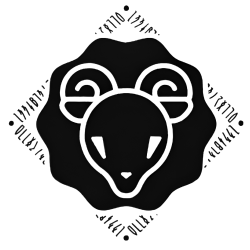
The text reads "innocent sheep" on repeat. For the goat one, it reads "guilty goat" on repeat.
Text above doors for T2 is "Lasciate ogne speranza, voi ch'intrate", or "abandon all hope, ye who enter here". The quote is from Dante's Inferno, the words written into the gate to hell.
For the T1 key visuals, the text individual to each prisoner simply gives basic info. For example, Yuno's would be "Milgram second prisoner, eighteen age, five foot (something or other) point (something or other) height, female", with the others being in the same format.
The wall behind the prisoners in Undercover just has "ft" and "ft in", for measurement.
The backgrounds that look like this:
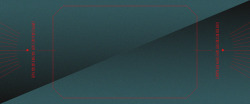
all read "every (s)aint has a past, and every sinner has a future." This is the same for some of the wallpapers, and whenever that kind of vertical text shows up (voice trailers and such). It's missing the "s" in "saint".
Tags on the clothes and the tops of the cards from Undercover are all just their names. The prison jackets seem to repeat the text, "Milgram ---- prisoner (name)".
The Undercover CD's cipher text just reads "Milgram prison guard Undercover Es. Es theme song CV Yurina Amami".
Es's sashes read (backwards) "De omnibus dubitandum" and "Prison Officer".
Are there any other ciphers that I've missed? Because I'd really like to try and translate those!
31 notes
·
View notes
Text
John’s self destructive tendencies and coping mechanisms: theory
TW for sh, suicide mention
So I was thinking about this for a while and I want to talk about Mikoto’s tattered clothes in trial 2.
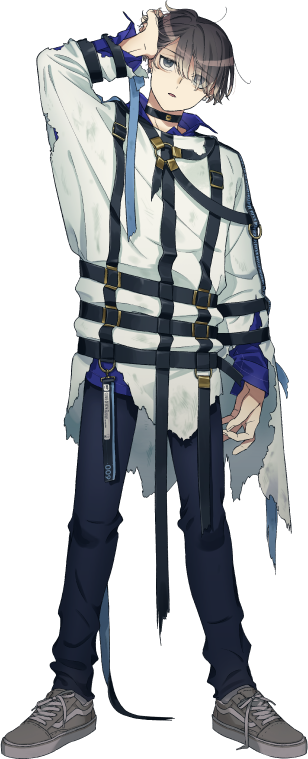
So basically in trial 2 we can see how the guilty prisoners uniforms have changed, with them having more restraints coinciding with Jackalope’s mention of phases of restraints. But Mikoto’s in interesting in this case because unlike the others his clothes are all tattered, and technically have less restraints than in trial 1. Initially I thought that this was remnants of Kotoko’s attack but looking at it more that doesn’t seem to be the case.


Just look at this these are bite marks. And obviously Kotoko wouldn’t have been biting him during the fight so it’s obviously self inflicted, and looking at the rest the straitjacket is ripped this definitely makes sense. Heck, it’s even said to be happening in trial 1 by this minigram.

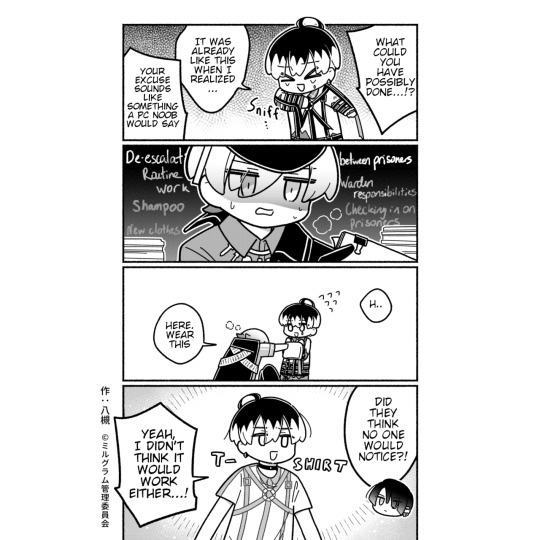
It’s confirmed that all of the minigrams happen during trial 1, so we know about this already. And Mikoto mentions that he doesn’t know how it ended up like this, so it was probably John’s doing. And likely during his breakdowns at night time especially since Amane mentioned it right before. And since Mikoto was offered a replacement it’s probably a cycle of John destroying the clothes, and Mikoto getting a replacement so it’s probably happening a lot. And I mean, in the art for Double we literally see John tugging at the straitjacket.
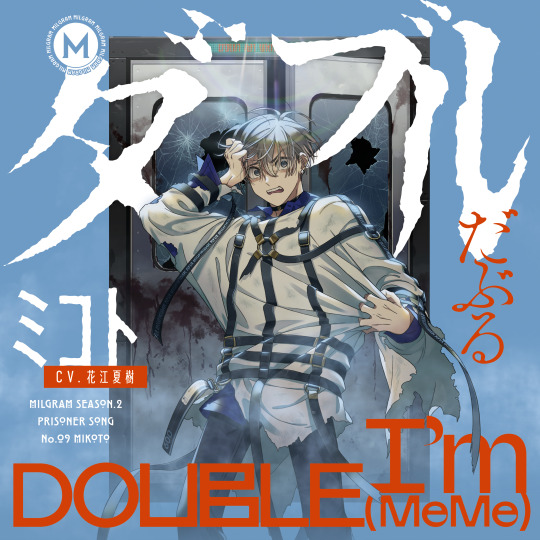
(Also I noticed this now, but again in one of the minigrams one of the noises coming from his room is the sound of ripping)

But then the question is, why? First I thought that maybe John just wanted to get out as much as possible by ripping the straitjacket off. But I thought about it a while and that wouldn’t really make sense. As the straitjacket itself currently doesn’t have its restraints as much to really impair movement, and he never has expressed desire to leave but at the same time, it’s John, he basically hides everything about himself.
But then I thought, this is very likely happening during his breakdowns at night, so he’s lashing out at the environment and also lashing out at himself by ripping apart his clothes. And then I realised, John likely has self-destructive tendencies, but is harming the jacket instead of himself because he knows that’d hurt Mikoto.
I think this is probably what’s happening here, as it explains a lot for the tattered clothes and how it’s very likely a stress reaction. And also I’ve seen theories that the blood in the bathtub from MeMe was his own blood from an attempted suicide/self harming, and him collapsing in the shower was due to blood loss. This would also fit with the line sung in that scene “Maybe it's ok to try to keep on living,
Split in half, Make that heart beat”. But probably knowing that Mikoto would be suffering because of that, who he wants to protect so much. He lashes out in a different way by destroying the environment around him and ripping apart his clothes. Which good for John for finding alternatives I guess…
But this is really interesting to think about. As if it is true it gives alot of insight into John’s character. It’s very likely he’s heavily self loathing as expressed through Neoplasm and Double. And we know he’s constantly stressed and likely in mental agony. So how he deals with his stress as lashes inward, but doesn’t want to hurt Mikoto in the process is really interesting and sad. Like he’s willing to completely destroy his own life in order to protect Mikoto’s, but he’s already passed the breaking point and can’t control his stress and agony…
#milgram#Milgram theory#John kayano#john milgram#mikoto kayano#tw sh#with every analysis I’ve made of John I just want to hug him even more#LanieMae’s theories
138 notes
·
View notes
Text
Why I believe John/Orekoto was lying about his motive in Neoplasm
Ok so double just came out and I have a lot of thoughts. When a new MV comes out I usually wait a while until I can make a proper analysis but this one is mostly going to focus on neoplasm. And in particular one thing me and my friend found particularly suspicious about John’s (Orekoto’s) testimony when it comes to the murder(s).
When Es questioned John about their murder, he responded very clearly with “Yeah it was me, I killed them off”. And after that Es questioned why he did it, only to say that he did it only because they were annoying him and it was whoever was walking by. Es goes quiet at this which might imply to me some sort of suspicion on his testimony. John goes on to say that he can’t remember how many he killed because he was just born back then and his memory is kinda fuzzy.
Instantly this set off a ton of red flags for me, it just doesn’t make any sense when you think about it. Earlier on when John fronted he started acting all violent and threatened to beat up Es, who just calmly laughed it off. Es seemed to be quickly notice something was off, as their calm demeanour enacted an also suspiciously calm demeanour from John. Es then said it was strange because they assumed him to be a monster. After hearing that John instantly went back into that violent persona that they were showing as soon as they fronted.
This scene is very telling to me. John is not violent, or evil, heartless or anything like that. He’s only acting that way to potentially come out less. And be even straight up says “if I had stayed a monster… maybe that would’ve been better.” Then instantly takes back what he said by just going “…what?”
From this it’s very clear, like I said, that John isn’t evil. But then that takes what he said about his murders into question. That he only did it because he just got annoyed and killed random passers. This clearly isn’t true when you take into account the whole interaction with Es, because otherwise he would’ve attempted to kill Es the whole time and not go docile when they weren’t acting scared.
I believe that John is trying to dip back into his monster persona he made for himself here. He probably figured out that acting evil all the time wouldn’t work, and when questioned on such a sensitive topic such as the murder he just went with the option that made him the least sympathetic, and Mikoto more sympathetic in order to lower his stress levels by not telling the full truth.
As for who committed the murder/s, I’m still pretty unsure. In double it looks like both sides are perpetrators. But this also takes into account, what about those scenes of John killing the mannequins? It seems like it matches up enough to what he said in the voice drama but I don’t think that’s the smiling gun.
Milgram is an extremely complex series, and in no way should the easiest option be assumed as the right one. Unreliable narrators are a big thing in the series, and we should look at a character’s MV with how they view themselves in mind. For example, Kazui thinks himself as a monster and this is especially prevalent in Cat, where if you’d take it at first glance you might assume that he’s evil or whatever, just as he views himself.
The same should apply to John as well. He wants to believe he’s a monster in order to protect Mikoto from more mental stress about his murder, and might end up with him fronting less. This likely subconsciously played itself into double and even MeMe, where John portrays himself as evil as that’s what he wants people to view him as.
I feel like when discussing who’s the murder and if John is evil, we should definitely take this into account otherwise our future opinions will be biased.
Ok so someone just mentioned the fact that he had a baseball bat in the first place means it was likely a premeditated murder. So him killing people just because they annoyed him would be a really weird thing to say because that would’ve been an impulsive murder, and he had a weapon at the time.
#milgram#mikoto kayano#Milgram theory#yes I am calling him john I think it’s hilarious and fitting for a little goober#This was basically a theory me and my friend came up with when we were watching neoplasm together#I could’ve gone into more depth with this but I feel like this summarises what I want to say good enough#From the start I felt like it was very clear he was lying about killing those people because they annoyed him#Im surprised so many people took that at face value#Remember prisoners can lie in their voice dramas and their view of themselves can affect the mvs#People should really take this into account otherwise it’d probably prompt even more “john/orekoto is evil” bs again#And I don’t know how to fit this in but I’m still thinking alot how#In the first trial voice trailer mikoto says “my (boku) life it wasn’t supposed to be this way…”#In the glitched out segment which is heavily implied to be when/around the prisoners committed their murders#LanieMae’s theories
90 notes
·
View notes
Text
thinking about how in meme we see John smiling a lot more rather than in double when he’s almost entirely emotionless

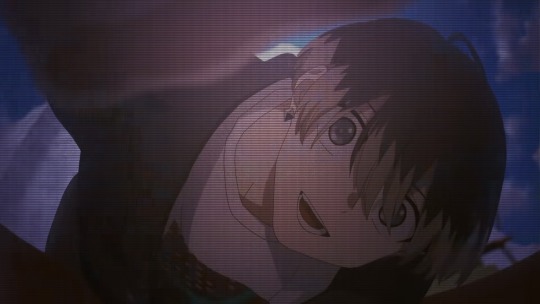
But also with this he still has those expressionless moments that look a lot more like how he does in double.


This is making me think alot. What’s John actually like? Is he really truly as stoic as we see him? I have a lot to believe that’s more so his true personality when he’s not pretending to be a monster. But it’s interesting how in meme we see him smiling alot and showing a lot more emotion.

There’s even in this one part where he’s shown to be legitimately scared, questioning his own existence.

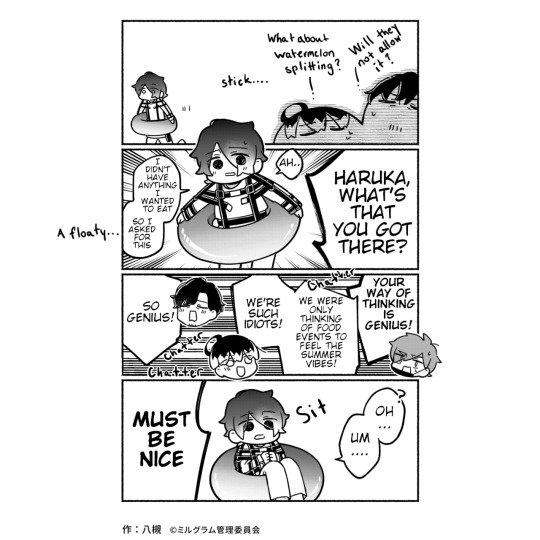
and even in this one minigram we see him a lot more happy and social able here rather than his stoic demeanour in neoplasm (just to note we know it’s John here, as he uses to first person pronouns ore).
Although this minigram could be John masquerading as Mikoto potentially, I’m not entirely sold in that. And it’s interesting how lively he’s interacting with the other prisoners here even though we know that he’s scared of them and lashes out and pushes them away, so why’s that not happening here?
Maybe a theory I have is something about him being treated as human vs being treated as a monster. In neoplasm when he first comes out, he instantly lashes out at es and threatens them but when es calms down and doesn’t react as expected and treats him as normal. John retreats and drops the facade. Maybe this could be a response to actually being treated as a human instead of a scary monster to run away from as he tries to show. But he’s never had this type of interaction before so he just lets it happen. Maybe he’s not lashing out in this minigram because maybe he doesn’t want to be treated as a monster? The ordeal he’s trying to put himself through is very painful and has probably pushed him to the breaking point so maybe he desires this kind of interaction.
idk anymore I’m just spitballing basically. I still don’t understand if he’s really as stoic as he seems to be but at the same time I don’t think it’s a facade but maybe he’s only that way because he’s basically lost everything? Aughdjbsiwbsowbwjdjs
#milgram#Milgram theory#john milgram#john kayano#this is one of those times where I feel like I may have an answer but at the same time I feel like I’m completely lost#I need your guys thoughts on this this is hurting my brain#Or maybe thinking about it the mikoto grabbing the camera at the beginning could be boku mikoto#But my point still stands with John smiling with the fool card#LanieMae’s theories
45 notes
·
View notes
Text
What’s up with this table scene in Deep Cover? (And another theory on colour symbolism and that final scene)

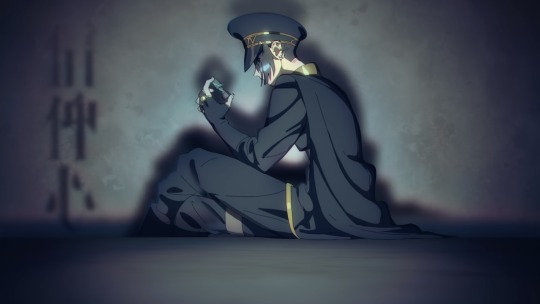

In this one scene where she’s eyeing the chess peices of Kazui, Amane and Mikoto is really confusing to me. This scene (and the one after) depicts only these three. Like I can understand as Kazui was the one who stopped Kotoko from fully beating up Fuuta, and Amane and Mikoto were the guilty prisoners she wasn’t able to fully inflict pain on but it’s interesting how she’s only eyeing these three here.
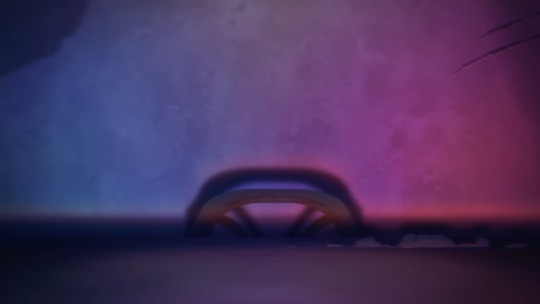
And when the camera starts spinning there’s no chess pieces for the other prisoners, only indescribable rubble that doesn’t match up with the pieces (I’ll get to that later). And even Fuuta’s and Mahiru’s pieces aren’t here, but when it keeps spinning it goes back to Kazui, Amane and Mikoto’s pieces still on the table. So what’s up with this? And there’s no sign of Kotoko’s throne which would be right next to Mikoto’s chair. But interestingly enough her chair is back not long later when she’s standing on the table?
This is really interesting but I don’t know exactly what to make of this. All other prisoners that aren’t Kazui, Amane or Mikoto have been completely removed from this scene, and Kotoko’s chair as well. Instead she’s sitting on the other’s chairs instead of her own. Although it seems that may not be the case for Amane, as it looks like she’s sitting on the table there. Or maybe she’s just sitting sideways, it’s hard to tell.
There’s also how in the scene right after this where there’s only one Kotoko, and she’s standing between Amane and Mikoto’s chairs.

She’s eyeing Mikoto’s broken piece, smiling and laughing, representing her overblown hate for him.(which I still don’t exactly know why she really wants to kill him so badly? Some of the things she’s said makes me think it may be ableism but I don’t think it’s just that.)
And unlike the others who’s chess pieces are in front of their own chairs, his piece is broken in front of her, perhaps even with the likely guilty verdict she may try to attack him again.
There’s also the colours here, where the purple and blue colours often show when she’s breaking the chess pieces or other violent scenes, which is just a little detail I really like. But it also makes the thumbnail scene interesting as that has the more normal grey palette? Thinking about it perhaps this colour scheme represents her desire to take everyone down, as Amane and Mikoto’s pieces are broken here but she only really attacked Fuuta and Mahiru in real life. But that’d make it interesting considering Kazui’s piece is not broken here but at the end it is.
So going back to the rubble thing I mentioned earlier, there appears to be shattered pieces of stone all around the table that do not look like the broken prisoner chess pieces, as this rubble is more broken and doesn’t have any colour.
It’s interesting as this rubble has just appeared out of nowhere, and replaced the other prisoners chess pieces in this scene as well. And it surrounds Kazui’s piece despite it not being broken. And in the scene where she’s on the table, the remains of the guilty prisoners and the other rubble swirl around her in a ring.

And this is where I want to talk about the layout of the chairs and the rubble more as this shot is incredibly confusing to me.

So right off the bat there’s something really strange here. Again there’s rubble all over the table but this time it’s in weird clumps. There appears to be 3 maybe 4 clumps on the table, in a position where it looks like it could represent the guilty prisoners perhaps, but if you look closely they do not match up with where the prisoners seats would be, and they’re just everywhere, and it doesn’t seem like the individual chess pieces are here either.


But in the end, the table has been completely destroyed and the entire mindscape has been engulfed in the bright blues and pinks, which I mentioned could represent her violent desires. The innocent prisoner’s chess pieces have been destroyed with blood all over them and the guilty ones nowhere to be seen. And Kotoko’s piece, the only one intact is the only one that remains, and is covered in blood.
Ok so just going to go off topic here but I just thought about this final scene while writing. If the pink and blue colours represent her desires, perhaps the overly saturated colours represent her desires going out of control and killing everyone. This could explain why Kazui’s chess piece wasn’t broken in the table scene with these colours but it is now.
Perhaps this final scene isn’t exactly what Kotoko wants, but is what she is scared she will become if she doesn’t try to stop herself. She’s struggling at the beginning to hold herself together and gives up, with the shadow of the werewolf emerging from her. The wolves are Kotoko’s representation of her justice, this werewolf is the violent justice that destroys. She’s afraid of what she could become here, that’s why she’s so horrified at the end. She doesn’t exactly want this outcome, she doesn’t want to kill all the prisoners. But she’s scared that how far she’s been going into her extreme ideologies could lead her down this path.

#Milgram#Milgram theory#Kotoko yuzuriha#LanieMae’s theories#I’ve noticed a lack of theories lately and especially with deep cover I’m adding some speculation fuel here#The last theory about kotoko not wanting that final outcome and representing her ideals going out of hand is actually inspired by side orde#Like I’ve been thinking a lot about order being an extreme version of marinas idelologies where they could be what she fears of being#And then I thought about kotoko and realised that’s exactly what the last scene is implying here#I’ll need to talk about splatoon and Marina another day but it’s really interesting how they both have ideals that could be incredibly#dangerous if they were left to an extreme. With order and justice respectively#And order (the character) and the werewolf being physical representations of what could happen#I’m screaming right now I love this so much this is such a cool concept
25 notes
·
View notes
Text
so just a thing a noticed. When rewatching magic I noticed that yuri doesn’t have the cloud symbol that all of the other leaders have.

And this got me thinking, I’ve seen quite a few speculations on maybe Yuri being sympathetic to Amane or being heavily influenced by the others. And how in the scene where amane gets tortured he’s the only one looking visibly distressed at the violence going on.
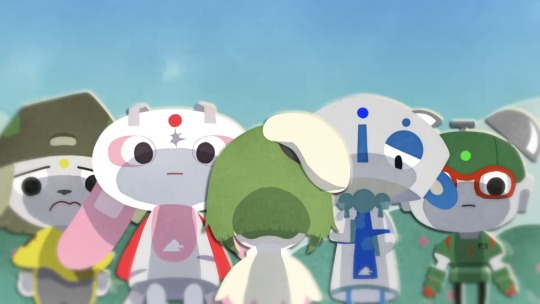

I’m not entirely sure what to make of it, but my guess is that Yuri might not be as faithful as the other leaders and that might be important later on. Idk just putting my thoughts out.
41 notes
·
View notes
Text
thinking about the final scene from MeMe
Here we see presumably John giving the death card to mikoto (thinking this because people have pointed out John seems to be right handed and mikoto left handed, and there’s a right hand giving a card and a left one receiving it).


And then afterwards we see John appearing to take up a camera/pov that was looking at the death card and destroys it.
So this has got me thinking, it appears John handed the turned down death card to mikoto, then who proceeded to turn it over to reveal it (likely implying that mikoto was the killer). But what’s strange is that immediately after offering the card to mikoto, John picks up the POV/camera and destroys it. Like he handed it to mikoto then instantly took it back?
I think this represents John trying to erase mikoto’s memories of the crime, hence punching the camera here.
As I said I think it’s likely that mikoto is the killer by him revealing the card, but that brings up why John did hand it to him in the first place?
This brings alot of questions to the table, but the first one that came to mind is that he may be an accomplice of sorts. This is actually a theory I heard about not long ago that he might’ve noticed mikoto’s deteriorating mental state and perhaps a desire arising to kill. So he might’ve set up a scene where mikoto was able to do it or something. And for both of them to be partially responsible for it, with John setting it up and Mikoto actually going through with this.
Personally I’m not too convinced on this theory as it kinda doesn’t exactly fit in with their behaviour. But I guess this is just something I noticed I’m throwing out there into the wild for everyone to do whatever with it. Maybe I’ll build on it later idk.
#milgram#mikoto kayano#Milgram theory#I know I said in an earlier post that I think this could represent mikoto killing his stalker#But I was also pointing out how it appeared to be from Mikoto’s perspective#Again I don’t entirely believe this because there are some parts that feel off#But you don’t have to believe every theory you create and shouldn’t feel obligated to do so#This is just me wanting to see everyone’s opinions on it because I feel like it could go somewhere#LanieMae’s theories
19 notes
·
View notes
Note
for ask game: 1, 3, 5 for Es and 5, 6, 8, 9, 10 for Amane~
This took a lot longer than I would’ve liked it to be I think I just turned this into a massive analysis rather than a simple ask game lmao.
Es 1: definitely this line.
“Ravaging, brawling, losers please exit left
Even with accusations full of faults and mistakes
You will for sure, with a smile for sure
Be pleased and satisfied”
This is clearly talking about the audience and it’s really interesting. I know the chorus does as well but how this appears in the scene where all the prisoners cover their mouths while their images are projected onto the rooms, then lift their hands down and smile is especially haunting.
The idea of “ravaging, brawling, losers please exit left” has a lot of interpretations. It could be the prisoners fighting amongst themselves, or in my opinion the audience fighting among themselves over the prisoners verdicts and stuff. I still don’t really understand what “losers please exit left” means as it’s so ambiguous, it’s like I’ve got tiny little ideas of what it could mean but I have no clue how to say, or even properly think about it.
“Even with accusations full of faults and mistakes.” Is a lot easier to understand. It’s talking about how us, as the audience, can be heavily biased by stuff and make dire mistakes on the characters and how heavily that can impact the verdict. Like with trial 1 kazui the main idea is that he was cheating and that’s how the stuff happened, although we were wrong and it had nothing to do with his situation. Lots of verdicts on prisoners aren’t based off factual evidence but just “I think statements”. If I remember correctly alot of people were voting yuno guilty in the first trial not because of what she actually did, but because they thought her attitude was strange and that she was secretly evil or whatever. And the opposite happening saying the at she was completely clueless and innocent. So this line fits perfectly for everything going on.
“You will for sure, with a smile for sure
Be pleased and satisfied.” This is probably the most chilling line to me. It straight up says how in the end, milgram is a piece of media meant to entertain people. You will be satisfied engaging in the media, even if you didn’t get your intended verdict. But this poses the question, is this ethical to the characters? Having fun judging them, theorising every little bit of their mind that was extracted through their MVs. The secrets they don’t want us to know, they’re online for millions to theorise about, and may make false accusations and mistakes in their judgment. Fuuta directly calls on this saying that es is the same as him, having fun analysing this prisoners and judging their morality, just like what he did online.
These few sentences are easily overlooked and only appear for a little while but they are so packed with meaning and meta commentary it’s amazing.
Also side note I find it interesting how es speaks in “you” instead of “I” like the other prisoners, like they’re directly talking to us. It’s like the whole mv is directed at us, because it is. But does es know?
Es 3: ooh this is hard I’d have to say a tie between these 2.
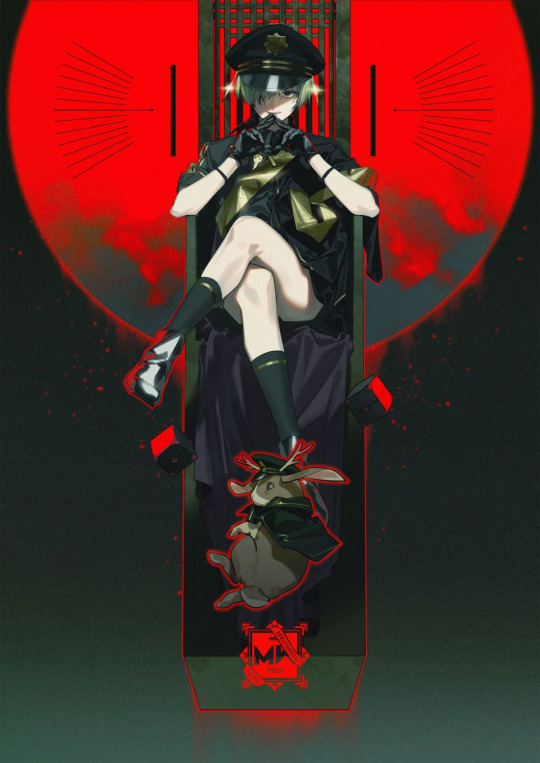
This is one of the commissioned fanart of the characters I think, and I love how menacing es looks here. If you’ve never seen milgram you’d probably assume that es is the main villain or whatever. And although es is technically the protagonist, it’d be really interesting for es to be a villain. A mysterious character who has no memory of their past and entire identity is being the guard of this mysterious prison. And their judgments aren’t even really their own, it’s the will of thousands of people who know the characters deepest secrets. This makes me wonder if we’re ever gonna have to cast a vote on es…
Ok rambling aside I really love the red circle and greenish background and mist (?) it just really gives off that iconic vibe that I love about the series.

The other one I really like is this one from the app. It feels both peaceful and surreal of es asleep, with jackalope sitting on their cape and a water ripple which really shouldn’t be there. It gives a unique vibe to this piece and a side of es we don’t really see, and the full colours here fit really well.
Es 5: ooh this is also pretty hard as es has alot of voice drama moments so it’s really hard to pick a favorite moment or line or whatever.
Definitely a longer scene but probably my favorite is near the end of baptism of fire when es expresses sympathy for fuuta and the other prisoners. Saying that since they’ve been by their side for a while and looked into their hearts they’re no longer strangers to them and seeing fuuta in pain makes them begin to regret their actions. Es says how they’re starting to think of the prisoners more as comrades than suspicious strangers. They say that it’s a pity, but the bell rings and their attitude completely changes. Es finishes off the sentence with “that I’m the warden” and says no matter how much pain fuuta’s been going through, he can’t escape justice. Acting a lot more “logical” (if that’s the right word) and saying that they don’t care about fuuta apologising. Fuuta gets extremely upset at this, as es, who was showing him compassion and sympathy earlier, suddenly changed and started putting him down, which lead fuuta to have a panic attack In probably one of my favorite scenes in all the voice dramas.
This is a really interesting scene for es’ character because we start to see a side of them we haven’t before. A more human side, as opposed to the cold, logical minded warden they were conditioned to be. But when the bell rings, everything changes and they go back to that state. Making me think that the bell could have some affect on es, as it reminds me of times when es starts breaking down when asked about the nature of their identity and the prison itself. This is such great characterisation I can’t.
Amane 5: “Furthermore, isn't it condescending of you to assume that just because I happen to be a child, I am incapable of hating someone enough to kill them?”
This line in Apostle and Death is really interesting, as despite how much Amane says but murder was purely of faith, she basically revealed part of her motive here. @purgemarchlockdown did a really good analysis on this line saying she’s presenting it as a hypothetical, but it’s what actually happened.
Amane’s murder likely has multiple reasons, yes faith is a big part in her motive but I think the main point that drove her to murder was pure hate. She’s trying to cover it up for whatever reason but the truth is revealing itself. She’s said a lot in the VDs and the interrogation questions that it was just a punishment in line with faith, but the purge march contradicts it with much more emotion heavy lyrics.
A honourable mention would be “You know, I’m aware that I’m out of the ordinary.” From of blessedness and punishment. I don’t know why but I think about that line a lot.
Amane 6: I already answered this question in a previous ask but to sum it up it’s Amane and fuuta because their characters have so many parallels to each other, and it looks like they’re gonna become friends in canon because they’ve been interacting a lot lately. And it appears fuuta is taking religious ideas from Amane which would be a really interesting plot point and would reveal alot about his mindset.
Amane 8: Amane’s crime is probably one of the hardest to grasp for me, like have general consensus on what happened but there’s a bunch of little tidbits and oddities that feel really important but I have no idea where they go in the timeline. I think it started with the cat getting injured, but magic makes it confusing as that cat didn’t have a collar, got injured on the head and was injured by a falling light (likely representative of the happy facade of the cult breaking, so I think how the cat got injured is very important). Amane seemed to always to go the place where the cat was, and she was spotted fixing up the cat’s leg. It’s very likely that this was her breaking the “'Tis ordained, thou shall follow thine destiny” rule. But what’s confusing that in the purge march is that in that scene she fails the flag throw for “'Tis ordained, thou shall discard vulgarity” and gets promptly punished for it. This happens before the scene with the cat, which ends with electrical torture, which would fit with the first rule as we see in magic. But we have no idea how she broke that 2nd rule, and it’s very likely that’s where she started building up hate. Magic also implies she broke all the rules but we only really know about the one with the cat.
It definitely seems from interrogation question trial 2 no 17 she killed her mother, as she said “my mother should have kept her faith until the very end.” This could imply that Amane’s mother disobeyed the cult in one way or another? I’ve seen speculation as that killing the cat is again also interfering with destiny, that could be what amane means. But the way she worded it implies that her mom was actively trying to leave the cult somehow.
Another thing I think is interesting is what amane said in interrogation question t2 no 17
Q: what do the people you respect think about your sin?
A: I just followed what I’ve been taught, so obviously they’ll praise me and tell me I did well.
I’ve already stayed that I think amanes murder is mostly emotion driven, but also has aspects of her religion in it. I’m not sure if she’s trying to convince herself that’s the case or something like that actually happened. But it’s interesting to think that she’s lying about it and trying to say that she did it for he faith to not beat herself up over it.
Amane 9: personally I’ll forgive her crime on its own. She’s only 12, and had a clear motive that stems from abuse even if some themes of her “needing to do it” were involved, but I suggested that could be a coping mechanism. Amane’s had a very hard life and we know that she can lash out at people in rage, as seen in the second voice drama in which she got so angry she attempted to attack es with scissors she bought in earlier. I’m not gonna talk about that because it’s somewhat off topic, but the environment that lead up to Amane killing is understandable. She’s not malicious in her intent at all, she’s broken by the people around her, and this is her lashing out at one of her abusers. Punishing her for what she did is only going to make things worse, so id forgive her murder on her own.
Amane 10: it’s kinda confusing. In trial 2 I’d still forgive her, both with the reasoning I gave in the previous post and how subjecting her to more mental torment will completely break her to no return.
In trial 1 it’s a lot more difficult because even though I was not there, the choice is really hard. I’d still say forgive, as looking back on it we’ve uncovered how bad it was to Amane’s mental state and our hypocrisies in voting. But if I was there back then I probably would’ve voted her guilty. When I was watching milgram for the first time in chronological order, I somewhat agreed with that because she was so expecting that she’d be forgiven and it’s just another trial to get through, and we assumed at that point it was purely due to religious motives.
Again looking back on it now after the purge march, I would forgive her back then but it’s still a difficult choice.
#milgram#Ask game#ask#es milgram#amane momose#milgram theory#screw it I’m tagging it as Theory I think I went a little overboard with this one lmao#It also ended up breaking the notes page I was using because I was writing too much#This is the problem of being extremely analytical and analysing everything from the most basic prompt#LanieMae’s theories
16 notes
·
View notes